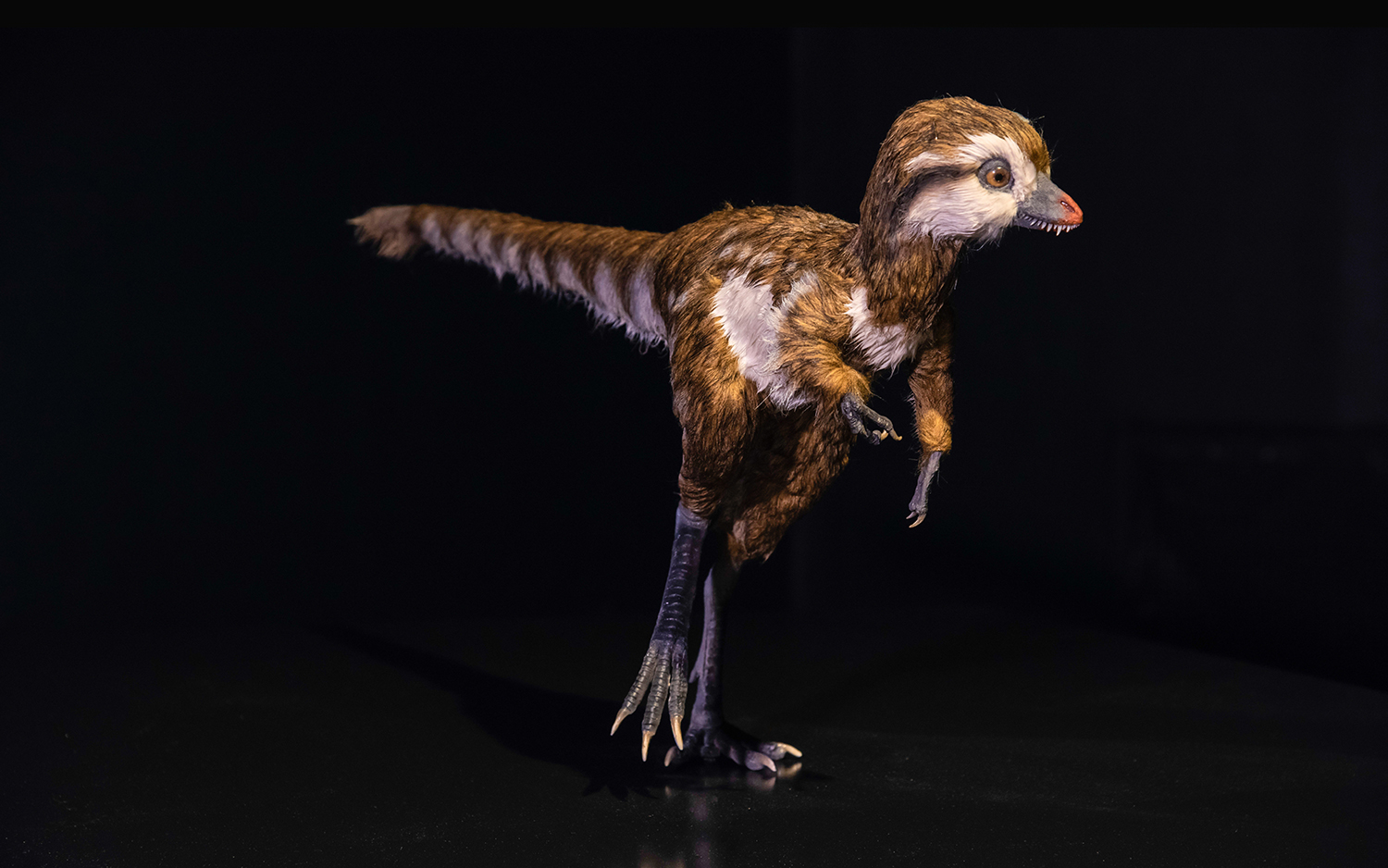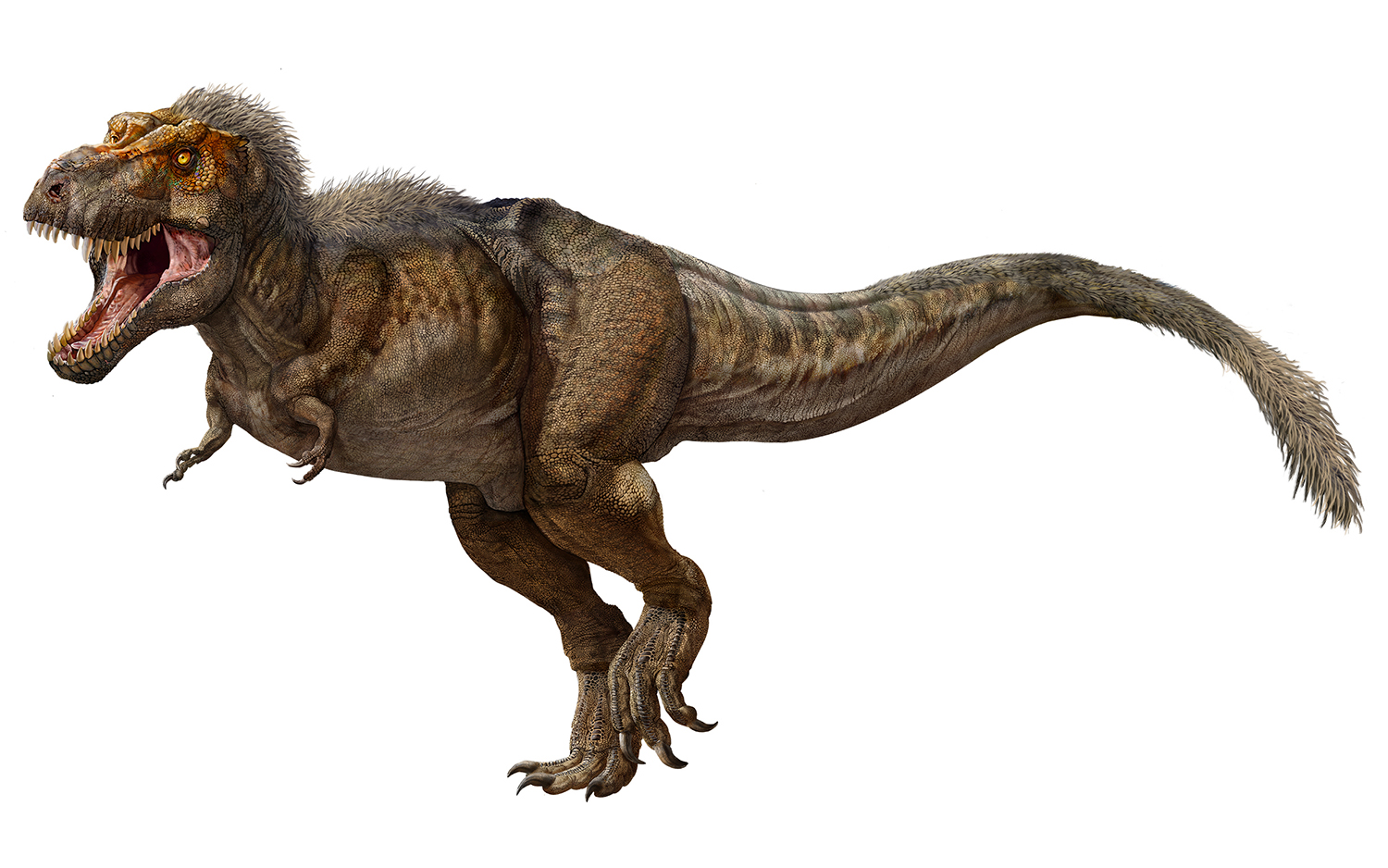Baby T. Rex Was an Adorable Ball of Fluff

It may be hard to imagine towering Tyrannosaurus rex as tiny, but the toothy Cretaceous giant didn't spring from an egg fully grown. In fact, T. rex hatchlings were about the size of very skinny turkeys, with "arms" that were longer in proportion to their tiny bodies than in adults. And each baby T. rex was covered in a coat of downy feathers.
What's more, T. rex's feathers likely grew along the animal's head and tail into adulthood, according to new reconstructions that represent the most accurate models of the dinosaur to date.
These and many more T. rex surprises abound in T. rex: The Ultimate Predator, a new exhibit opening March 11 at the American Museum of Natural History (AMNH) in New York City. While T. rex is one of the most iconic dinosaurs, the exhibition presents new discoveries that are transforming scientists' understanding of this colossal carnivore and its tyrannosaur cousins, all of which likely had feathers, too. [In Images: A New Look at T. Rex and Relatives]
Most of the tyrannosaur species featured in the exhibit were unknown to science prior to 2000, Martin Schwabacher, an exhibition writer at the AMNH, told Live Science. Early tyrannosaurs first appeared about 167 million years ago, around 100 million years before T. rex ruled the Cretaceous. These early tyrannosaurs had relatively long arms, and were smaller and faster than the giant T. rex.
But even T. rex wasn't always enormous. The exhibit's minuscule and endearingly fluffy model of a T. rex hatchling underscores the dinosaur's dramatic growth, as it ballooned from a turkey-size juvenile to a gargantuan adult. By the time it was about 20 years old, a full-grown T. rex would stand about 12 to 13 feet (3.6 to 3.9 meters) tall at the hip, span 40 to 43 feet (12 to 13 m) from nose to tail and weigh approximately 6 to 9 tons (5,500 to 8,000 kilograms).
During their rapid growth, juveniles would gain about 6 lbs. (3 kg) per day for 13 years, said paleontologist Mark Norell, curator of both the exhibit and the Division of Paleontology at the AMNH.
Though T. rex has long been known to have dramatically undersized "arms" for its body size, few of this species' front limbs have been recovered from the fossil record, Norell told Live Science. And based on the few fossil arms that paleontologists have recently discovered, the puny arms on the exhibit's adult T. rex model are even smaller than they've been portrayed in the past, Norell said.
Get the world’s most fascinating discoveries delivered straight to your inbox.
However, that doesn't mean that T. rex arms were weak or useless.
"They're not fragile; the bones are very robust, the joints are mobile and it looks like they were well-muscled," Schwabacher said. In T. rex hatchlings, the proportions of their arms were a much better match to their body size, which means that very young T. rexes may have been able to use their arms to grasp prey, as other small tyrannosaurs likely did.
Adult T. rex also may have used its arms and claws to slash at prey that it had already knocked down with its massive head and jaws, Schwabacher said. But with a bite force estimated at 7,800 pounds-force (34,500 newtons) — the strongest of any living animal and most extinct animals — T. rex probably didn't need to do much with its arms to subdue a meal.
"Its head was adapted to apply pressure until bones just exploded," Schwabacher said.
T. rex: The Ultimate Predator is on display at the AMNH from March 11, 2019, to Aug. 9, 2020.
Editor's note: This story was updated to reflect that T. rex's bite force was stronger than the bite force in most extinct animals (but not all).
- Image Gallery: The Life of T. Rex
- Images: These Downy Dinosaurs Sported Feathers
- Photos: The Near-Complete Wankel T. Rex
Originally published on Live Science.

Mindy Weisberger is a science journalist and author of "Rise of the Zombie Bugs: The Surprising Science of Parasitic Mind-Control" (Hopkins Press). She formerly edited for Scholastic and was a channel editor and senior writer for Live Science. She has reported on general science, covering climate change, paleontology, biology and space. Mindy studied film at Columbia University; prior to LS, she produced, wrote and directed media for the American Museum of Natural History in NYC. Her videos about dinosaurs, astrophysics, biodiversity and evolution appear in museums and science centers worldwide, earning awards such as the CINE Golden Eagle and the Communicator Award of Excellence. Her writing has also appeared in Scientific American, The Washington Post, How It Works Magazine and CNN.




